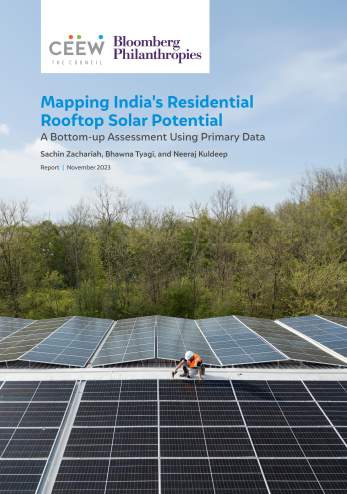Report
Reforming Kerosene Subsidies in India
Towards Better Alternatives
Abhishek Jain, Aditya Ramji
April 2016 | Energy Transitions
Suggested Citation: Jain, Abhishek, and Aditya Ramji. 2016. Reforming Kerosene Subsidies in India: Towards Better Alternatives. New Delhi: Council on Energy, Environment and Water.
Overview
This study explores how to rationalise the kerosene subsidy to improve government effectiveness, as well as provide the maximum benefit to the households spending on the fuel. Kerosene has been continued as a subsidised fuel to provide affordable cooking and lighting to households in India for the last 60 years. However, the kerosene subsidy in its current form is highly inefficient. There is a need to shift to efficient alternatives as high levels of leakage in the distribution of subsidised kerosene mar the subsidy program in its current form.
The analysis, the second of a two-part series conducted with the International Institute for Sustainable Development (IISD), found that only 49 per cent of the kerosene under the public distribution system (PDS) actually reaches households at a subsidised price. About 34 per cent of the allocated kerosene never reaches the intended households. According to the Economic Survey of India 2014-15, leakage in kerosene subsidies costs the exchequer USD 1.5 billion.
Petroleum products subsidies in India (including under-recoveries by Oil Marketing Companies)

Source: CEEW analysis, 2016
Key Findings
- Only 49 per cent of the PDS kerosene actually reaches the households at a subsidised price. About 34 per cent of the allocated subsidised kerosene never reaches intended households.
- There are many bureaucratic hurdles to getting a legal connection, especially in unauthorised slum areas.
- Rural households spend INR 50–120 per month to meet their lighting needs from kerosene, with a median expenditure of INR 80.
- Urban households spend between INR 400–800 per month, with expenditure crossing INR 1,500 per month in some cases.
- The high upfront cost of an LPG connection limits many households’ ability to get one.
- It also poses a significant public health burden on the overall economy, as using kerosene for cooking and lighting is hazardous to human health.
- A transition from subsidised kerosene to alternatives could accrue net savings worth INR 8,000– 12,000 crore per annum for the lifetime of the alternative.
Monthly kerosene expenditure of rural households across states

Source: CEEW analysis, 2016
Key Recommendations
- Make special provisions to release LPG connections in urban-slums through dedicated LPG distributors for such areas with 2–5 kg cylinder connections only.
- Subsidise of the cost of connection, or reduce the size of cylinders. To 2-5 kgs.
- Improve composite material of cylinders.
- Focus on awareness programmes.
- Work on challenges related to financing, service reliability, universal coverage, access, safety and cash flow to effectively enable a transition from kerosene to alternative sources.
A transition to alternatives such as grid electricity, solar lanterns, solar home systems, micro grids, and LPG could accrue annual net savings worth INR 8000-12000 crore over the lifetime of the alternative.







